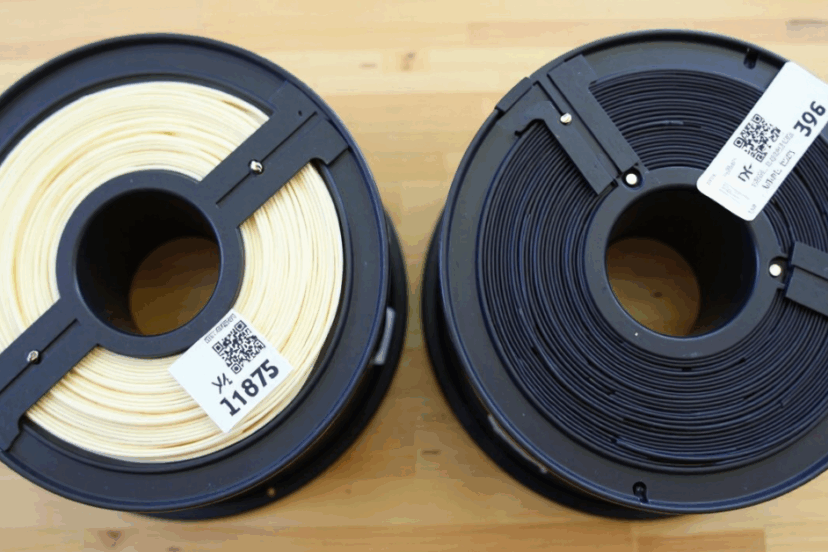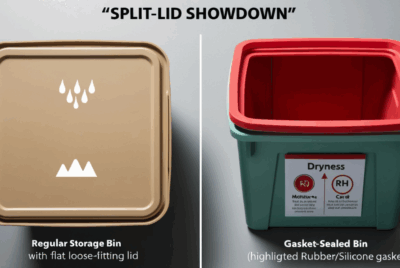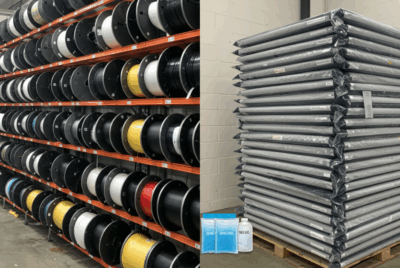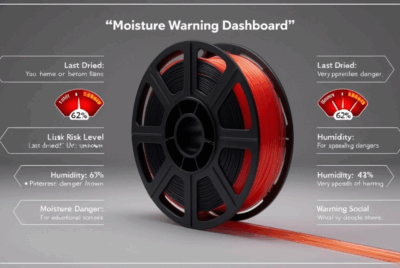What Is the Best Way to Store Filament After Drying?
1. Introduction: Drying Is Only Half the Battle
You’ve done the hard work.
You’ve dried your filament and it’s fresh, warm, and ready to go.
Now the question is:
How do you store it so it stays that way?
Because drying filament is great—
But if you don’t store it correctly afterward, you’re back to square one.
2. Why Storage After Drying Is So Important
Dried filament is like a sponge—it’s just waiting to soak up moisture again.
Leave it exposed to air for a few hours and:
- It’ll absorb water vapor
- Lose print quality
- Start popping or stringing again
- Require another drying cycle
Protecting it immediately after drying is critical.
3. What Happens if You Skip Proper Storage
Without airtight storage:
- PETG can reabsorb moisture in <12 hours
- Nylon can go bad in under 6 hours
- Even PLA will start degrading after a day in humid air
Drying filament without storing it correctly is like drying dishes and tossing them into a puddle.
4. The Golden Rule: Seal It While It’s Dry
As soon as drying is done:
✅ Remove filament while still warm
✅ Place it directly into a sealed container or vacuum bag
✅ Add fresh silica gel or other desiccants
✅ Label it with the dried date
Do this immediately—every minute counts.
5. Vacuum Sealing: The Gold Standard
Vacuum-sealing is hands down the best method for storing dried filament.
Why?
- Removes all air (and thus humidity)
- Compresses the spool for easy stacking
- Keeps it safe for months to years
- Works great with color-changing silica gel
Top vacuum sealing kits:
- eSun Vacuum Kit
- Dry & Dry Hand Pump Vacuum Bags
- Geryon Vacuum Sealer System
6. Airtight Containers for Everyday Use
If vacuum sealing feels like overkill, use airtight bins or boxes.
Look for:
| Feature | Why It Matters |
|---|---|
| Gasket-sealed lids | Stops airflow and humidity |
| Stackable design | Saves workspace |
| Opaque sides | Blocks UV light |
| Built-in hygrometer | Tracks internal RH |
Popular options:
- IRIS Weathertight Bins
- PrintDry Filament Containers
- Modified food storage bins
Pair with desiccants and RH cards.
7. Using Dry Boxes as Dual Storage + Feeders
Dry boxes are fantastic if you print regularly with a spool but want to keep it protected in between.
Use options like:
- SUNLU S2
- PrintDry Pro
- eSun eBox
They let you:
- Keep filament dry
- Print directly from the box
- Store the spool without re-bagging it every time
8. Labeling Dry Filament for Future You
Use labels or stickers to track:
- Material type + brand
- Color and finish
- Date dried
- Ideal temp settings
- Any special notes (e.g., “last 300g” or “for supports only”)
You’ll save tons of time later.
9. Do You Need Desiccants? (Yes.)
Even in airtight storage, some moisture will sneak in.
Combat it with:
- Color-changing silica gel packs
- Calcium chloride crystals (for heavy-duty drying)
- Reusable desiccant cans
Use 50–100 grams per spool or container, depending on size.
Recharge packs by baking them at 250°F (120°C) for 1–2 hours.
10. Humidity Indicators: Tiny Tools, Huge Help
Add a humidity card to each container.
These show you:
- Current RH inside
- When it’s time to swap out or recharge your desiccants
- Whether your seal has failed
They’re cheap and super effective.
11. Best Storage RH Levels by Filament Type
| Filament | Ideal RH Storage Range |
|---|---|
| PLA | <40% |
| PETG | <30% |
| TPU | <25% |
| Nylon | <20% |
| PVA | <15% |
Use a hygrometer to keep track.
12. Storing Multiple Spools: Group by Sensitivity
Tips for bulk storage:
- Store sensitive filaments (Nylon, PVA) in their own sealed containers
- Use color tags to sort by material or moisture sensitivity
- Label each bin so you don’t open and reseal constantly
Only open bins when absolutely needed—less exposure = longer life.
13. Long-Term vs. Short-Term Storage
Short-term (1–7 days):
- Airtight bin
- 1–2 silica packs
- Dry box if printing again soon
Long-term (weeks to months):
- Vacuum-sealed bag
- 2–3 silica gel packs
- Stored in a dark, cool, dry area
- Rotate every few months for drying if unused
14. Common Mistakes to Avoid After Drying
❌ Leaving filament out overnight after drying
❌ Resealing without fresh desiccant
❌ Tossing it in a loose plastic bin
❌ Forgetting to label it
❌ Assuming dry = dry forever
Drying is a reset. Storing is the maintenance plan.
15. Final Thoughts: Dry, Seal, and Store Like a Pro
Want consistent prints every time?
Your drying setup won’t help if you don’t store filament properly afterward.
So here’s your battle plan:
✅ Dry it
✅ Seal it
✅ Label it
✅ Track it
✅ Keep it cool, dark, and dry
Treat your filament like food—and you’ll avoid reprinting your “half-cooked” models.
❓FAQs
- Can I leave dried filament out for a day before sealing it?
Not recommended—especially for PETG, TPU, and Nylon. Moisture returns fast. - Should I dry filament again before every print?
Only if it’s been exposed to open air or you see signs of moisture. Otherwise, sealed storage keeps it ready. - Do I need to vacuum seal if I store in airtight bins?
No—but vacuum sealing is better for long-term protection. - Can desiccants expire or stop working?
Yes. Always use color-indicating packs and recharge them as needed. - What’s better: dry box or vacuum bag?
For active use: dry box.
For long-term storage: vacuum bag.




